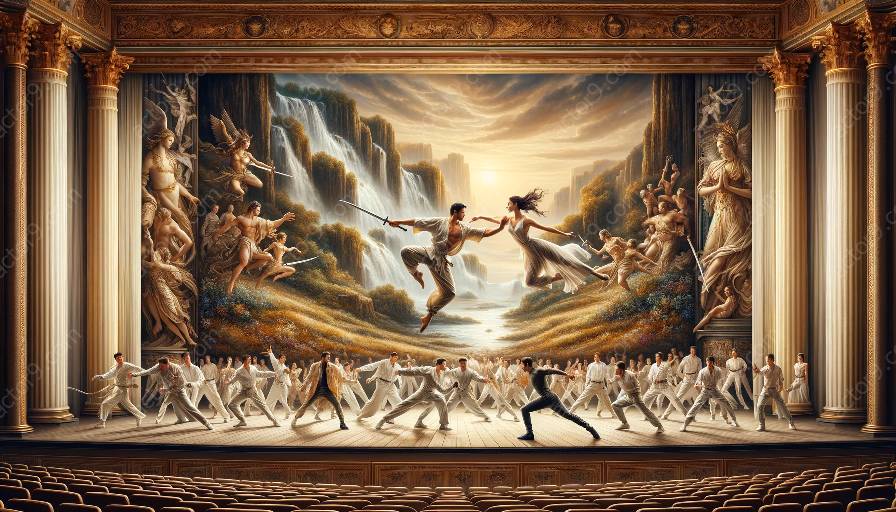Stage combat is a crucial aspect of theater and acting, bringing thrilling and impactful moments to the stage. The creation of compelling fight sequences involves a close collaboration between directors and fight choreographers, who work together to ensure the safety, authenticity, and dramatic impact of the combat scenes. This topic cluster explores the intricate process through which directors and fight choreographers achieve captivating stage combat sequences and its significance in the art of stage combat, acting, and theater.
Understanding the Role of Fight Choreographers in Stage Combat
Fight choreographers are skilled professionals responsible for designing, coordinating, and executing staged combat sequences in theatrical productions. Their expertise encompasses a deep understanding of different fighting styles, weapon handling, and the principles of safety and stagecraft. From hand-to-hand combat to sword fighting and beyond, fight choreographers bring an artistic and technical perspective to the creation of dynamic and convincing fight scenes.
The Collaboration Between Directors and Fight Choreographers
When creating stage combat sequences, directors and fight choreographers engage in a collaborative process that begins with understanding the dramatic context, character motivations, and the overall vision of the production. Directors provide the artistic direction and storytelling objectives, while fight choreographers bring their technical expertise to choreograph and stage the fight sequences in alignment with the directorial vision.
Effective communication and mutual respect are essential elements of this collaboration. Directors and fight choreographers work closely to ensure that the fight sequences serve the narrative and character development while maintaining a high level of safety for the performers and the audience. They explore ways to enhance the emotional intensity and visual impact of the combat scenes while adhering to the artistic vision of the production.
Exploring the Impact on the Art of Stage Combat
The collaboration between directors and fight choreographers significantly influences the art of stage combat. Through their combined efforts, they elevate the authenticity and theatricality of fight sequences, enriching the overall theatrical experience for the audience. The artistry and precision involved in staging compelling combat sequences contribute to the development and advancement of stage combat as a specialized discipline within the realm of theatrical performance.
Role in Acting and Theater
Compelling stage combat sequences enhance the dramatic impact and realism of theatrical productions, effectively immersing audiences in the world of the play or performance. Actors benefit from the collaboration between directors and fight choreographers, as they receive training and guidance to execute fight sequences convincingly and safely. This collaboration also highlights the importance of physical storytelling and movement in theater, emphasizing the role of stage combat in portraying conflict, power dynamics, and character relationships.
Conclusion
The partnership between directors and fight choreographers is essential in achieving captivating stage combat sequences that captivate audiences and contribute to the artistic and dramatic success of theatrical productions. Their collaboration not only shapes the art of stage combat but also enhances the overall impact of acting and theater, underscoring the significance of well-executed fight choreography in creating compelling and memorable theatrical experiences.















































